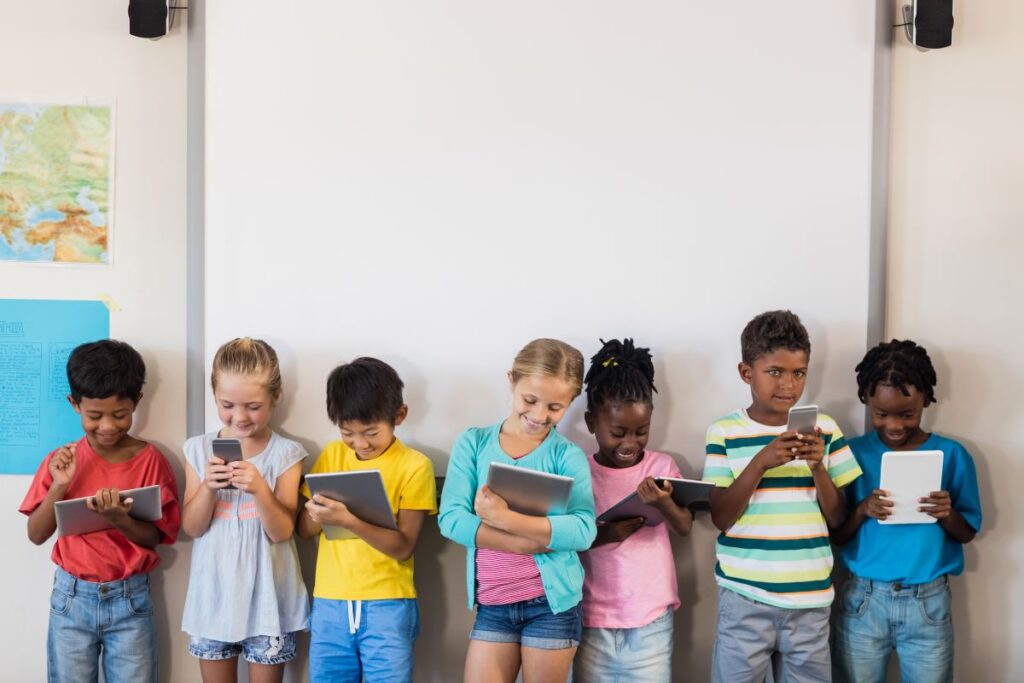Technology continues to revolutionize education. It enhances instruction, better engages students, and redefines learning. It prepares students for their 21st-century education and future career path. Some educational technology tools have been around for a decade and are still favorites in today’s classroom. Other tech tools are popping up left and right. It can be overwhelming to know which ones are worth implementing. Below is an explanation of some of the best educational technology tools to try (or keep alive in your toolbox) for this 2023 school year.
Virtual Learning Platforms
One virtual learning platform that should stay (or quickly be added) to your teaching tool kit is Code.org. Code became famous for its wealth of resources when it came to the popular “Hour of Code” worldwide event. But if you aren’t familiar with this global movement, let me back up for a moment. Code is a coding platform that teaches students how to code without intimidating set ups or big initial time commitments.
Free to users, Code.org offers coding tutorials based on already popular games like Minecraft and more. There are options for elementary, middle, and high school students and over 200 million projects created. Whether you are a first-time coder or an expert, this platform has something for everyone.
Learning Management System
Google Classroom was created in 2014 as a free public application. These type of learning management systems were designed with the help of educators to make communication, collaboration, and the managing of assignments easier for everyone. It is continuously revamping its features and improving its functionality so teachers can focus on teaching and students can focus on learning. Teachers can use Google Classroom to manage classes, assign assignments, give real-time feedback, post announcements, and even strike engaging question-driven virtual discussions. An oldie, but a goodie, when it comes to LMS, this one seems to be here to stay.
Collaboration Tools
In the United States, there are 40 million students who are growing up in underserved and immigrant communities. How can teachers effectively communicate with families coming from a variety of countries, with a variety of cultures and backgrounds? There isn’t one quick answer to this loaded question, but there is a good place to start. TalkingPoints is a non-profit organization that is solely focused on engaging families of under-resourced and multilingual communities.
How it works is that teachers can use either a web browser or mobile app to send messages to families. TalkingPoints translates these messages into one of 145 languages. Parents read the message in their preferred language and can message back. TalkingPoints is the only platform invested in enhanced translation, contextualized for education, and uses AI and human translators to ensure the message is delivered in the way it was intended.
Social Emotional
There has been a huge push in schools to place focus on students’ social and emotional learning. One ed tech tool that is available to help with that is called Along. Along is a free digital platform that teachers implement to reflect and deepen student-teacher connections. This regular check-in tool makes building relationships with students easier and helps keep connections strong. Teachers begin by choosing from a database of research-informed questions and resources.
They take this prompt and add their own response before sharing it with students. Students receive the prompt, listen to their teacher’s response, and then create a video, text, or audio response. The response is posted privately back to the teacher. Along allows educators to ask questions and pose thoughts. Students get the opportunity to respond in a non-threatening, private way. Help your class feel they belong by trying out Along!
Literacy Support
Wish there was a way to get students standards-aligned news articles on current events and engaging topics on a regular basis? Look no further than The Juice. This platform is designed for students in grades fifth through twelfth. It delivers five current event articles at four different reading levels each day. The article includes vocabulary builders, formative standards-based assessments, infographics, and STEAM video content. These unbiased current events articles include scaffolds to help support low readers and English learners. The real-time diagnostic insights give teachers at-a-glance information to help progress monitor students on their comprehension and understanding.
Educational Games
Now for the fun part: educational games. Prodigy is one that has been around for a handful of years and still seems to remain at the top of students’ favorites list. If you are not familiar with this game-based learning platform for math and English, today’s the day. As students compete in battles or build their own worlds, content specific questions are being delivered through the adaptive algorithm.
Student data appears on the teacher’s dashboard to track students’ real-time progress. Teachers can assign specific topics or standards to their class and the number of questions the students should be asked on each standard. Prodigy is even more engaging for students because they can find their classmates within the game and meet them in the various worlds.
Assessment Tools
Hopefully you are familiar with the game-based learning platform, Kahoot. If not, here is a popular assessment tool to try in your classroom today! Teachers create their Kahoot (or access one already made in the library) and play it in their group setting. Students join the game using a unique PIN. Once everyone is in the game and it has begun, students race to answer the questions being displayed on a larger screen (Smartboard, Apple TV, etc.)
Teachers can embed pictures or video clips to further engage students. The students’ answers are saved, and the teacher can later access them in order to better check for understanding on the content. Students love playing Kahoot and teachers love how simple it is to implement into the classroom on a regular basis.
What are the best educational technology tools of 2023? There are so many out there! But hopefully, you find the list above to be favorites in your classroom. Whether you try out coding with Code, TalkingPoints to better connect your families, or along to develop more authentic relationships with your students, these educational technology tools are certain to engage and excite your students in this new 2023-2024 school year!
Educators never stop learning; check out our available graduate degree programs to hone your skills and promote lifelong learning and academic excellence.




